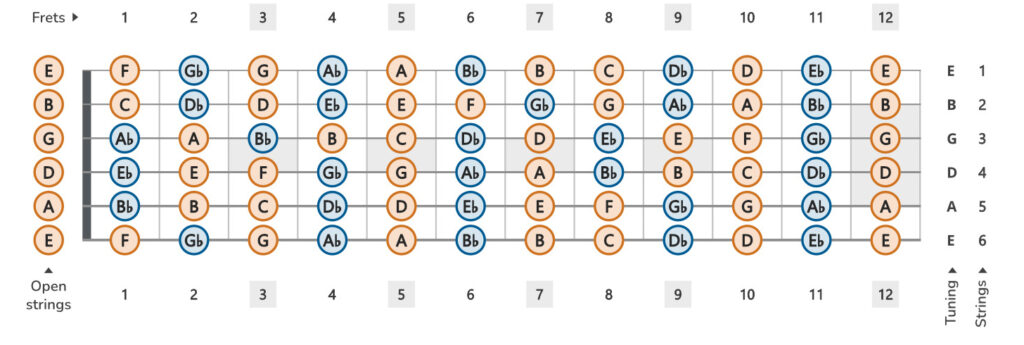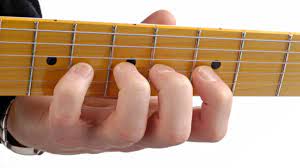Does the Guitar’s Layout Make Music Theory Challenging?
Share this post
Navigating the Fretboard: Does the Guitar’s Layout Make Music Theory Challenging?
The unique layout of the guitar fretboard is often a subject of fascination for many musicians. Unlike the linear arrangement of notes on instruments like the piano, the guitar presents a multidimensional maze of strings and frets. Making the guitar seem daunting to novices and seasoned players alike. This raises an intriguing question: Does the guitar’s distinctive layout make learning music theory more challenging? In this post, we’ll explore the intricacies of the guitar’s design and its impact on mastering music theory.
The Multilayered Fretboard

The guitar’s fretboard is a complex grid where the same note can be found in multiple locations, and chords can be played in various voicings across the neck. This layout, while offering a rich tapestry of tonal possibilities, can initially obscure the direct visual representation of music theory concepts seen in more linear instruments like the piano.
Challenges in Learning Music Theory on Guitar
- Visualizing Scales and Intervals: The non-linear arrangement of notes means that visualizing scales and intervals requires a more abstract understanding than on a piano, where notes are sequentially arranged.
- Chord Construction and Voicings: Guitarists often learn chords as shapes rather than as a collection of individual notes, which can delay the understanding of how chords are constructed from scales and intervals.
- Note Repetition: The availability of the same note in multiple locations on the fretboard can complicate the process of learning scales and modes, as it offers numerous paths to achieve the same melodic line.
Advantages for Music Theory Learning
Despite these challenges, the guitar’s layout also offers unique advantages for learning music theory:
- Pattern Recognition: Once a guitarist becomes familiar with the fretboard, the patterns of scales, chords, and intervals become movable shapes, making it easier to transpose music and understand the relationships between keys.
- Harmonic Diversity: The guitar’s ability to easily play chords in various voicings and inversions enriches a player’s understanding of harmony and chord progression.
- Creative Application: The complexity of the fretboard encourages a more intuitive and experimental approach to music theory, fostering creativity and innovation in composition and improvisation.
Strategies to Overcome Challenges
- Fretboard Mastery: Invest time in learning the notes on the fretboard thoroughly. This foundational knowledge will demystify the guitar’s layout and make music theory concepts more accessible.
- Theory Integration: Apply music theory concepts directly to your guitar playing. For instance, practice scales by saying the note names out loud, and dissect chords to understand their note composition and function within a key.
- Visual Aids and Technology: Utilize fretboard diagrams, software, and apps designed to help visualize music theory concepts on the guitar. These tools can bridge the gap between abstract theory and practical application.

Conclusion:
While the guitar’s unique layout presents initial obstacles to learning music theory, it also offers a rich, flexible platform for creative expression and theoretical exploration. By embracing both the challenges and advantages of the guitar’s design, players can unlock a deeper understanding of music theory that is not only intellectually gratifying but also immensely practical in their musical journey. Whether you’re deciphering the mysteries of modal interchange or crafting your next chord progression, the guitar holds a universe of theoretical knowledge waiting to be explored.
